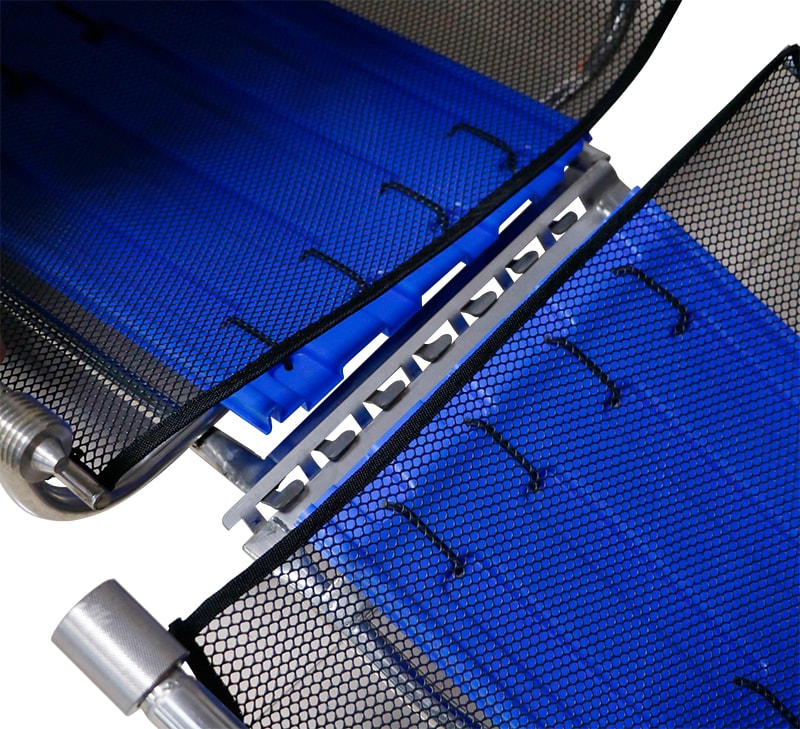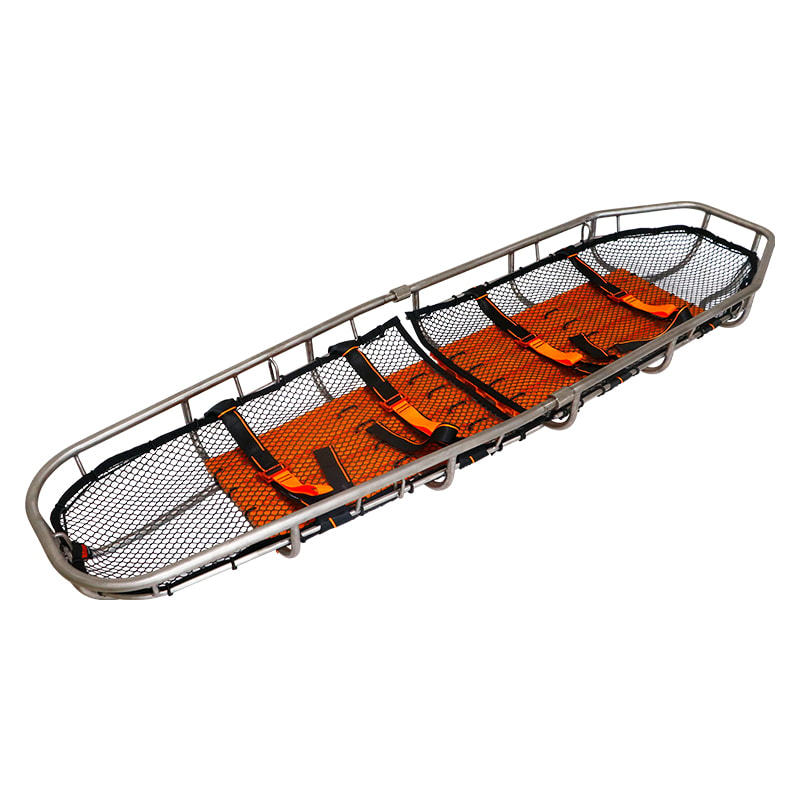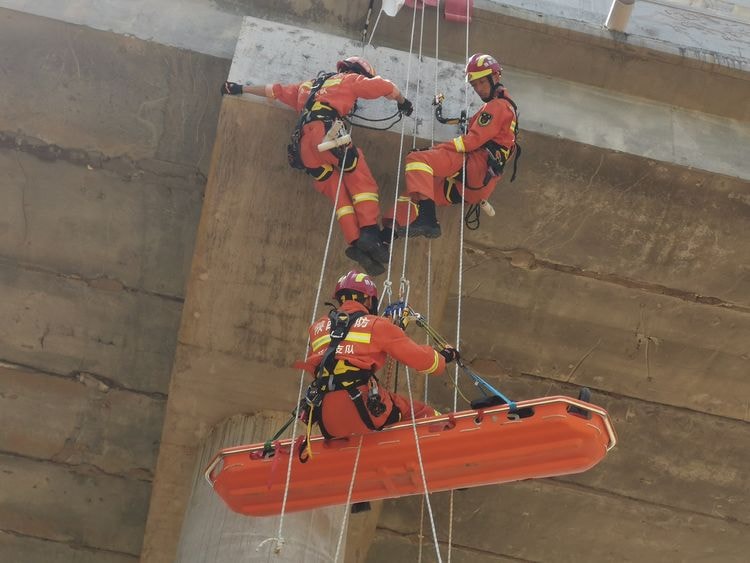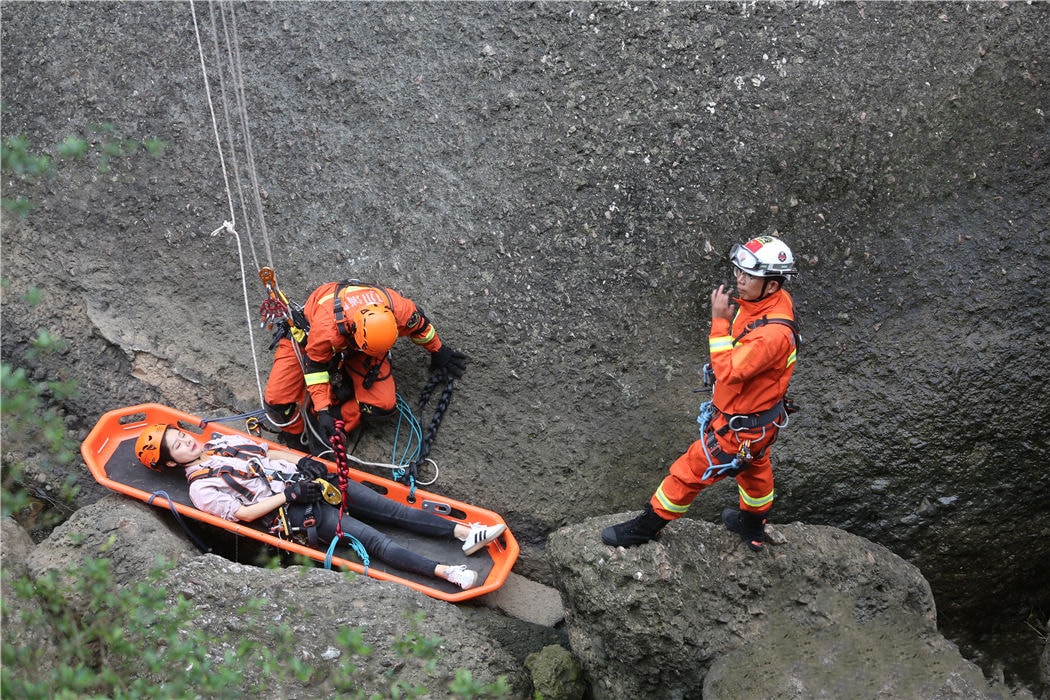A basket stretcher is essential for transporting injured individuals in challenging rescue scenarios such as mountains, caves, and urban areas. This article will dive into the stretcher, its key features, uses, and how it ensures safe and efficient rescues.
Key Takeaways
- Basket stretchers, also known as Stokes litters, are designed for the safe movement of injured individuals in various environments, offering stability and durability for effective rescue operations.
- Key features include a robust stainless steel design, ergonomic components for rescuers, and comprehensive safety accessories that minimize patient movement and enhance overall safety.
- Basket stretchers made from advanced materials like carbon alloy provide lightweight, strong, and environmentally resistant options, significantly improving efficiency and adaptability in critical situations.
Understanding the Basket Stretcher

A basket stretcher, commonly referred to as a Stokes litter, is crafted for the secure transportation of patients from challenging and harsh environments. Designed with stability and strength in mind, these stretchers are particularly suited for rescue missions across remote and inaccessible areas such as rugged mountainsides, subterranean caves, or remote off-road situations.
These types of stretchers can be effectively utilized not only in wilderness settings but also within urban locations. They have proved their worthiness during evacuations from towering structures or while conducting sea rescue efforts.
Key Features of Basket Stretchers

A well-designed basket stretcher can make all the difference in a rescue operation. Built with a durable stainless steel frame and netting, it provides a secure and stable way to move patients without adding unnecessary strain. Here are its key features:
- Built to Last – Crafted from high-strength stainless steel frame tubing and netting, this stretcher can handle demanding conditions without bending or breaking. Its smooth surface prevents additional harm to the patient while making cleaning quick and hassle-free.
- Adjustable Foot Anchors – Every rescue is different, and so is every patient. The stretcher comes with adjustable foot anchors, ensuring that the patient is correctly positioned for optimal stability during movement, especially on uneven terrain
- Fast & Secure Immobilization – In high-pressure situations, time matters. The built-in safety straps and quick-snap buckles, along with robust safety belts, keep the patient firmly in place with minimal effort, preventing unnecessary movement and reducing the risk of further injury.
- Easy to Store & Carry – Space is often limited in rescue vehicles and storage areas. That’s why this stretcher features a detachable design that makes it easy to break down, stack, and move—without compromising durability or performance.
- Ready for Aerial Rescues – Whether it’s a mountain extraction or an emergency airlift, this stretcher is equipped with a built-in sling that securely connects to aircraft hooks. This feature makes helicopter and high-angle rescues safer and more efficient.
Safety Measures and Life Support Equipment
- Room for Essential Gear – The spacious interior accommodates life-support equipment, blankets, and other medical necessities, keeping everything within reach during transport.
- Secure Restraint System – Safety straps minimize movement, preventing further injury. Quick-release buckles allow for fast, hassle-free adjustments, making patient handling smoother in high-pressure situations.
- Enhanced Stability Features – Adjustable foot anchors ensure a better fit for different victim heights, preventing shifts during movement. Stirrups with hooked straps add an extra brace, keeping the stretcher stable even on uneven ground.
- Optimized for Air Rescues – A built-in sling system allows for secure helicopter extractions, attaching directly to aircraft hooks. Reinforced safety lanyards keep the stretcher steady even in turbulent conditions.
- Durable and Hygienic – Molded runners improve grip on various surfaces, while non-absorbent foam padding enhances comfort and is easy to clean, ensuring the stretcher is always ready for use.
Advanced Materials: Carbon Alloy Basket Stretcher

Lightweight Design
One of the primary benefits of carbon alloy basket stretchers is their reduced weight due to the use of carbon fiber, which makes them more manageable for carrying and operating in urgent situations. This lightweight characteristic increases mobility and capacity for emergency responders, enabling faster and more effective movement of patients when time is critical.
Strength and Durability
Carbon alloy materials are known for exceptional strength and durability, providing high tensile strength that withstands substantial forces without deformation. The carbon alloy basket stretcher offers impact resistance, ensuring durability and reliability in challenging conditions.
Environmental Resistance
The reliability of carbon alloy basket stretchers is strengthened by their resistance to environmental factors. They are impervious to moisture, acids, alkalis, and various corrosive materials. This makes them a prudent acquisition for rescue squads looking for long-term value.
Enhancing Patient Comfort and Safety

Ensuring patient safety and comfort during movement is crucial, and such stretchers are designed with features that prioritize both. Secure life straps keep victims firmly in place, preventing unnecessary movement that could worsen injuries. Soft cushioning pads help reduce pressure points, while smooth surfaces minimize friction against the skin for a more comfortable experience.
Adjustable foot anchors provide extra stability by keeping the legs immobilized, and well-secured stirrups offer firm foot support, preventing strain. These thoughtful design elements work together to enhance both safety and comfort.
Additionally, organizations like the National Association for Search & Rescue (NASAR) offer comprehensive resources that further highlight how tools like the basket stretcher fit into broader rescue protocols.
Versatility and Adaptability
Rescue baskets are essential in rescue operations due to their versatility and adaptability. They can be configured for vertical lifts, making them suitable for cliff or mountain rescues, and can be attached to sleds for snow or water rescues. Their robust construction ensures stability on rough terrains, minimizing the risk of further injury during movement. This adaptability makes them indispensable tools for responders facing diverse rescues.
Lifting Sling for Field Rescue
The lifting sling plays a crucial role in outdoor rescue operations, improving the effectiveness of victim recovery. When rescue baskets are outfitted with a lifting sling, they can be attached to an aircraft hook and sling, for rapid and secure movement of victims from areas that are inaccessible by ground vehicles, like mountainous regions or dense forests.
Utilizing a lifting sling in conjunction with a rescue basket provides safe and proficient removal of victims from challenging landscapes. This combination not only accelerates the pace of rescue missions but also bolsters safety measures for both individuals being rescued and those conducting the rescues. Enhancing how lifting slings are used contributes to more efficient coordination during critical situations.
Accessory Options
Basket stretchers come with various accessories to enhance their adaptability in different rescue situations. Flotation collars provide buoyancy for water rescues while lifting bridles enable secure vertical and horizontal hoisting. Patient covers offer protection from harsh weather, and shoulder harnesses help distribute weight evenly for easier carrying. Skid sheets reduce friction and prevent damage when moving over rough terrain. These add-ons allow rescue teams to customize their stretchers based on mission needs, ensuring greater protection and efficiency.
Maintenance and Sustainability
Keeping a basket stretcher (rescue basket stretcher) in top condition is simple with regular upkeep. Cleaning it after each use with mild soap and lukewarm water helps remove contaminants and rust while avoiding harsh chemicals to preserve its integrity. Routine inspections are equally important—checking for fractured plastic snaps and securing any loose parts ensures continued reliability.
Crafted from carbon alloy, the stretcher is built to withstand exposure to chemicals, UV rays, and damp conditions without degrading. Its resilience in harsh climates ensures long-term durability, without corrosion, making it a dependable choice for extended use. Additionally, the recyclable nature of carbon alloy bolsters eco-friendly practices, reducing environmental impact while maintaining high performance.
Improving Rescue Efficiency

Basket stretchers enhance the effectiveness of rescue operations by being easy to handle, easy to find, and easy to access. They are easily integrated with other accessories and boast swift assembly times. It takes a mere 15 seconds to set up a rescue basket, facilitating its rapid use in dire scenarios where time is of the essence and immediate action is necessary.
The distinct high-visibility patterns on these stretchers aid in their quick identification across diverse settings, streamlining victim location and movement processes. Supplied with sturdy strapping mechanisms safety belts and secure attachment points for plate stretchers, they ensure victims are safely restrained during movement, minimizing additional injury risks. The detailed protocols provided by agencies like FEMA reinforce the value of using reliable, well-maintained devices to improve overall rescue performance.
Summary
Make sure your team is equipped with the most dependable and high-performance stretcher available. Our certified ambulance, scoop stretcher, and basket stretchers are built to handle the toughest rescue scenarios, from spinal immobilization to wilderness extractions. Designed for durability, precision, and ease of use, they meet the highest standards, ensuring smooth operations when it matters most.
Ready to upgrade? Get in touch today for a consultation with our trauma care specialists. We’ll help you find the right stretcher solutions to fit your needs and budget. Plus, for a limited time, enjoy an exclusive procurement checklist and 10% off your first order.
When every second counts, don’t settle for less. Choose stretchers that deliver reliability and efficiency when it’s needed most. Call now or visit our website to place your order—because your team deserves the best.
Frequently Asked Questions
What makes a basket stretcher different from other stretchers?
Unlike other stretchers, a basket stretcher boasts less weight and a sturdy build that provides stability and endurance in tough settings, offering secure patient transport with limited motion.
Its design is especially beneficial for use in rescue missions.
How do you assemble a basket stretcher?
To put together a basket stretcher, join the frame into two halves by sliding the stainless steel tubes into the circular openings and fastening them with the locking mechanism to ensure stability.
By doing this, you make certain that the stretcher is prepared for reliable operation.
What are the key features of a basket stretcher?
Constructed for durability, rescue baskets, and stretchers are often made from stainless steel, which provides resistance to corrosion. They also feature an ergonomic design that focuses on ensuring the protection of the patient as well as the comfort of those performing the rescue.
Why are carbon alloy materials used in some basket stretchers?
Some rescue baskets are constructed using carbon alloy materials because of their notable tensile strength, as well as being lightweight and capable of withstanding environmental elements such as moisture and acids.
This combination of characteristics guarantees that the stretchers manufactured remain durable and dependable even in strenuous situations.
How do basket stretchers enhance patient comfort and safety?
By integrating safety straps, cushioning pads, smooth surfaces, and adjustable foot anchors into the rescue basket, the comfort and safety of patients are markedly improved. These features work together to limit motion and provide steady support while the patient is being moved.



